Chenxi Liu
Anatomical Region-Guided Contrastive Decoding: A Plug-and-Play Strategy for Mitigating Hallucinations in Medical VLMs
Dec 19, 2025Abstract:Medical Vision-Language Models (MedVLMs) show immense promise in clinical applicability. However, their reliability is hindered by hallucinations, where models often fail to derive answers from visual evidence, instead relying on learned textual priors. Existing mitigation strategies for MedVLMs have distinct limitations: training-based methods rely on costly expert annotations, limiting scalability, while training-free interventions like contrastive decoding, though data-efficient, apply a global, untargeted correction whose effects in complex real-world clinical settings can be unreliable. To address these challenges, we introduce Anatomical Region-Guided Contrastive Decoding (ARCD), a plug-and-play strategy that mitigates hallucinations by providing targeted, region-specific guidance. Our module leverages an anatomical mask to direct a three-tiered contrastive decoding process. By dynamically re-weighting at the token, attention, and logits levels, it verifiably steers the model's focus onto specified regions, reinforcing anatomical understanding and suppressing factually incorrect outputs. Extensive experiments across diverse datasets, including chest X-ray, CT, brain MRI, and ocular ultrasound, demonstrate our method's effectiveness in improving regional understanding, reducing hallucinations, and enhancing overall diagnostic accuracy.
OpenVLN: Open-world aerial Vision-Language Navigation
Nov 09, 2025Abstract:Vision-language models (VLMs) have been widely-applied in ground-based vision-language navigation (VLN). However, the vast complexity of outdoor aerial environments compounds data acquisition challenges and imposes long-horizon trajectory planning requirements on Unmanned Aerial Vehicles (UAVs), introducing novel complexities for aerial VLN. To address these challenges, we propose a data-efficient Open-world aerial Vision-Language Navigation (i.e., OpenVLN) framework, which could execute language-guided flight with limited data constraints and enhance long-horizon trajectory planning capabilities in complex aerial environments. Specifically, we reconfigure a reinforcement learning framework to optimize the VLM for UAV navigation tasks, which can efficiently fine-tune VLM by using rule-based policies under limited training data. Concurrently, we introduce a long-horizon planner for trajectory synthesis that dynamically generates precise UAV actions via value-based rewards. To the end, we conduct sufficient navigation experiments on the TravelUAV benchmark with dataset scaling across diverse reward settings. Our method demonstrates consistent performance gains of up to 4.34% in Success Rate, 6.19% in Oracle Success Rate, and 4.07% in Success weighted by Path Length over baseline methods, validating its deployment efficacy for long-horizon UAV navigation in complex aerial environments.
Explore Data Left Behind in Reinforcement Learning for Reasoning Language Models
Nov 06, 2025Abstract:Reinforcement Learning with Verifiable Rewards (RLVR) has emerged as an effective approach for improving the reasoning abilities of large language models (LLMs). The Group Relative Policy Optimization (GRPO) family has demonstrated strong performance in training LLMs with RLVR. However, as models train longer and scale larger, more training prompts become residual prompts, those with zero variance rewards that provide no training signal. Consequently, fewer prompts contribute to training, reducing diversity and hindering effectiveness. To fully exploit these residual prompts, we propose the Explore Residual Prompts in Policy Optimization (ERPO) framework, which encourages exploration on residual prompts and reactivates their training signals. ERPO maintains a history tracker for each prompt and adaptively increases the sampling temperature for residual prompts that previously produced all correct responses. This encourages the model to generate more diverse reasoning traces, introducing incorrect responses that revive training signals. Empirical results on the Qwen2.5 series demonstrate that ERPO consistently surpasses strong baselines across multiple mathematical reasoning benchmarks.
Language-Instructed Reasoning for Group Activity Detection via Multimodal Large Language Model
Sep 19, 2025Abstract:Group activity detection (GAD) aims to simultaneously identify group members and categorize their collective activities within video sequences. Existing deep learning-based methods develop specialized architectures (e.g., transformer networks) to model the dynamics of individual roles and semantic dependencies between individuals and groups. However, they rely solely on implicit pattern recognition from visual features and struggle with contextual reasoning and explainability. In this work, we propose LIR-GAD, a novel framework of language-instructed reasoning for GAD via Multimodal Large Language Model (MLLM). Our approach expand the original vocabulary of MLLM by introducing an activity-level <ACT> token and multiple cluster-specific <GROUP> tokens. We process video frames alongside two specially designed tokens and language instructions, which are then integrated into the MLLM. The pretrained commonsense knowledge embedded in the MLLM enables the <ACT> token and <GROUP> tokens to effectively capture the semantic information of collective activities and learn distinct representational features of different groups, respectively. Also, we introduce a multi-label classification loss to further enhance the <ACT> token's ability to learn discriminative semantic representations. Then, we design a Multimodal Dual-Alignment Fusion (MDAF) module that integrates MLLM's hidden embeddings corresponding to the designed tokens with visual features, significantly enhancing the performance of GAD. Both quantitative and qualitative experiments demonstrate the superior performance of our proposed method in GAD taks.
STRATA-TS: Selective Knowledge Transfer for Urban Time Series Forecasting with Retrieval-Guided Reasoning
Aug 26, 2025Abstract:Urban forecasting models often face a severe data imbalance problem: only a few cities have dense, long-span records, while many others expose short or incomplete histories. Direct transfer from data-rich to data-scarce cities is unreliable because only a limited subset of source patterns truly benefits the target domain, whereas indiscriminate transfer risks introducing noise and negative transfer. We present STRATA-TS (Selective TRAnsfer via TArget-aware retrieval for Time Series), a framework that combines domain-adapted retrieval with reasoning-capable large models to improve forecasting in scarce data regimes. STRATA-TS employs a patch-based temporal encoder to identify source subsequences that are semantically and dynamically aligned with the target query. These retrieved exemplars are then injected into a retrieval-guided reasoning stage, where an LLM performs structured inference over target inputs and retrieved support. To enable efficient deployment, we distill the reasoning process into a compact open model via supervised fine-tuning. Extensive experiments on three parking availability datasets across Singapore, Nottingham, and Glasgow demonstrate that STRATA-TS consistently outperforms strong forecasting and transfer baselines, while providing interpretable knowledge transfer pathways.
AirV2X: Unified Air-Ground Vehicle-to-Everything Collaboration
Jun 24, 2025Abstract:While multi-vehicular collaborative driving demonstrates clear advantages over single-vehicle autonomy, traditional infrastructure-based V2X systems remain constrained by substantial deployment costs and the creation of "uncovered danger zones" in rural and suburban areas. We present AirV2X-Perception, a large-scale dataset that leverages Unmanned Aerial Vehicles (UAVs) as a flexible alternative or complement to fixed Road-Side Units (RSUs). Drones offer unique advantages over ground-based perception: complementary bird's-eye-views that reduce occlusions, dynamic positioning capabilities that enable hovering, patrolling, and escorting navigation rules, and significantly lower deployment costs compared to fixed infrastructure. Our dataset comprises 6.73 hours of drone-assisted driving scenarios across urban, suburban, and rural environments with varied weather and lighting conditions. The AirV2X-Perception dataset facilitates the development and standardized evaluation of Vehicle-to-Drone (V2D) algorithms, addressing a critical gap in the rapidly expanding field of aerial-assisted autonomous driving systems. The dataset and development kits are open-sourced at https://github.com/taco-group/AirV2X-Perception.
MSSDF: Modality-Shared Self-supervised Distillation for High-Resolution Multi-modal Remote Sensing Image Learning
Jun 11, 2025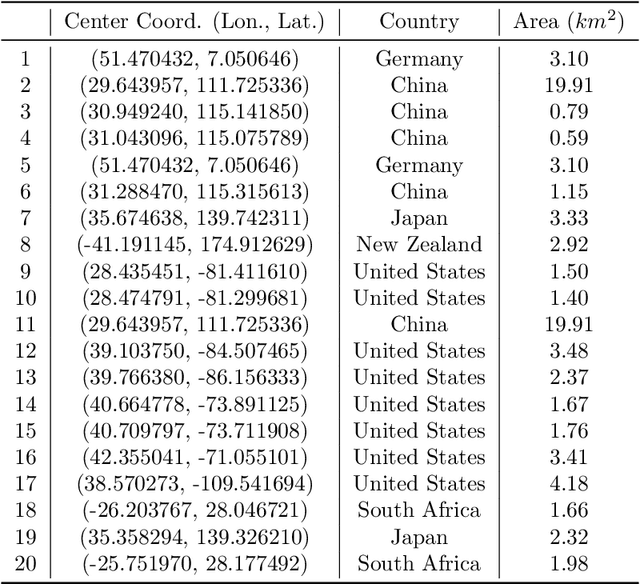
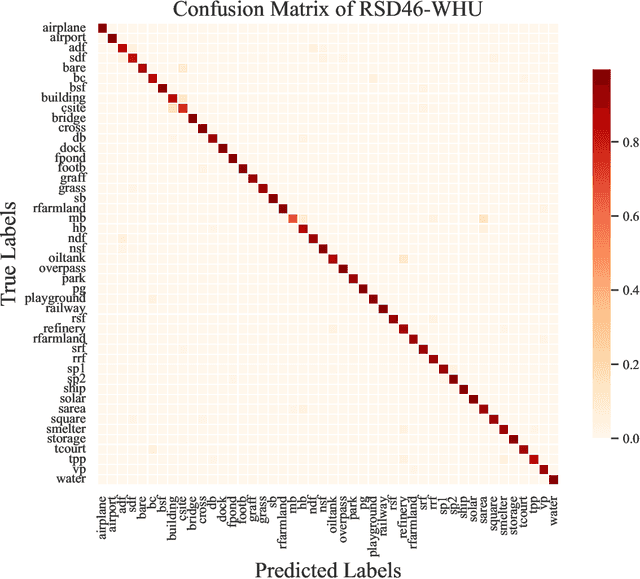
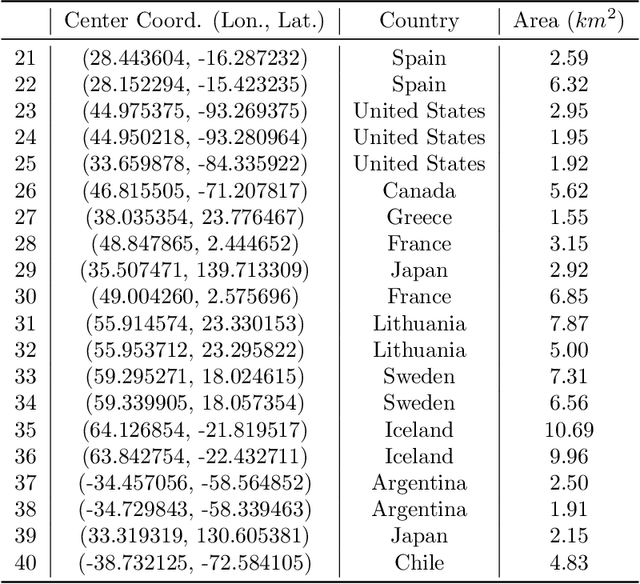
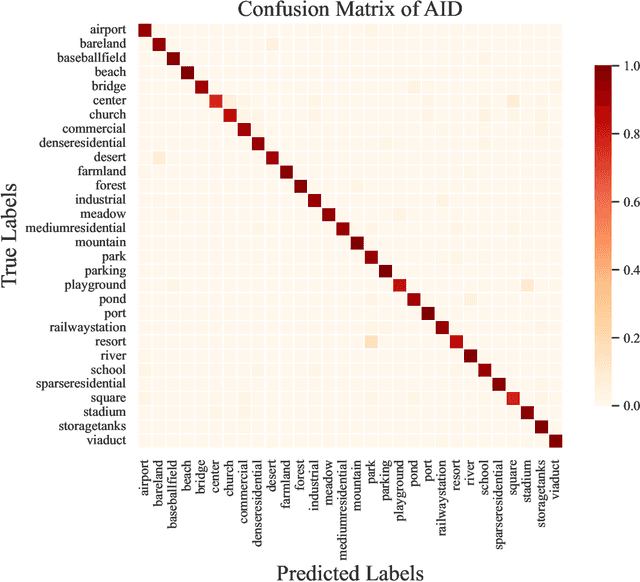
Abstract:Remote sensing image interpretation plays a critical role in environmental monitoring, urban planning, and disaster assessment. However, acquiring high-quality labeled data is often costly and time-consuming. To address this challenge, we proposes a multi-modal self-supervised learning framework that leverages high-resolution RGB images, multi-spectral data, and digital surface models (DSM) for pre-training. By designing an information-aware adaptive masking strategy, cross-modal masking mechanism, and multi-task self-supervised objectives, the framework effectively captures both the correlations across different modalities and the unique feature structures within each modality. We evaluated the proposed method on multiple downstream tasks, covering typical remote sensing applications such as scene classification, semantic segmentation, change detection, object detection, and depth estimation. Experiments are conducted on 15 remote sensing datasets, encompassing 26 tasks. The results demonstrate that the proposed method outperforms existing pretraining approaches in most tasks. Specifically, on the Potsdam and Vaihingen semantic segmentation tasks, our method achieved mIoU scores of 78.30\% and 76.50\%, with only 50\% train-set. For the US3D depth estimation task, the RMSE error is reduced to 0.182, and for the binary change detection task in SECOND dataset, our method achieved mIoU scores of 47.51\%, surpassing the second CS-MAE by 3 percentage points. Our pretrain code, checkpoints, and HR-Pairs dataset can be found in https://github.com/CVEO/MSSDF.
On the Thinking-Language Modeling Gap in Large Language Models
May 19, 2025


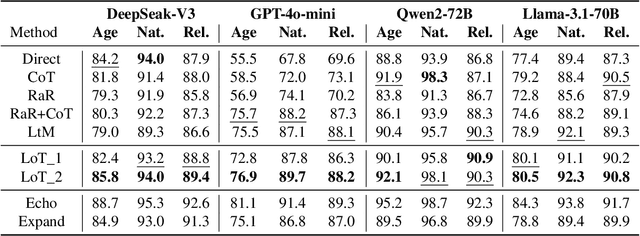
Abstract:System 2 reasoning is one of the defining characteristics of intelligence, which requires slow and logical thinking. Human conducts System 2 reasoning via the language of thoughts that organizes the reasoning process as a causal sequence of mental language, or thoughts. Recently, it has been observed that System 2 reasoning can be elicited from Large Language Models (LLMs) pre-trained on large-scale natural languages. However, in this work, we show that there is a significant gap between the modeling of languages and thoughts. As language is primarily a tool for humans to share knowledge and thinking, modeling human language can easily absorb language biases into LLMs deviated from the chain of thoughts in minds. Furthermore, we show that the biases will mislead the eliciting of "thoughts" in LLMs to focus only on a biased part of the premise. To this end, we propose a new prompt technique termed Language-of-Thoughts (LoT) to demonstrate and alleviate this gap. Instead of directly eliciting the chain of thoughts from partial information, LoT instructs LLMs to adjust the order and token used for the expressions of all the relevant information. We show that the simple strategy significantly reduces the language modeling biases in LLMs and improves the performance of LLMs across a variety of reasoning tasks.
Generative AI for Autonomous Driving: Frontiers and Opportunities
May 13, 2025Abstract:Generative Artificial Intelligence (GenAI) constitutes a transformative technological wave that reconfigures industries through its unparalleled capabilities for content creation, reasoning, planning, and multimodal understanding. This revolutionary force offers the most promising path yet toward solving one of engineering's grandest challenges: achieving reliable, fully autonomous driving, particularly the pursuit of Level 5 autonomy. This survey delivers a comprehensive and critical synthesis of the emerging role of GenAI across the autonomous driving stack. We begin by distilling the principles and trade-offs of modern generative modeling, encompassing VAEs, GANs, Diffusion Models, and Large Language Models (LLMs). We then map their frontier applications in image, LiDAR, trajectory, occupancy, video generation as well as LLM-guided reasoning and decision making. We categorize practical applications, such as synthetic data workflows, end-to-end driving strategies, high-fidelity digital twin systems, smart transportation networks, and cross-domain transfer to embodied AI. We identify key obstacles and possibilities such as comprehensive generalization across rare cases, evaluation and safety checks, budget-limited implementation, regulatory compliance, ethical concerns, and environmental effects, while proposing research plans across theoretical assurances, trust metrics, transport integration, and socio-technical influence. By unifying these threads, the survey provides a forward-looking reference for researchers, engineers, and policymakers navigating the convergence of generative AI and advanced autonomous mobility. An actively maintained repository of cited works is available at https://github.com/taco-group/GenAI4AD.
Towards Cross-Modality Modeling for Time Series Analytics: A Survey in the LLM Era
May 05, 2025Abstract:The proliferation of edge devices has generated an unprecedented volume of time series data across different domains, motivating various well-customized methods. Recently, Large Language Models (LLMs) have emerged as a new paradigm for time series analytics by leveraging the shared sequential nature of textual data and time series. However, a fundamental cross-modality gap between time series and LLMs exists, as LLMs are pre-trained on textual corpora and are not inherently optimized for time series. Many recent proposals are designed to address this issue. In this survey, we provide an up-to-date overview of LLMs-based cross-modality modeling for time series analytics. We first introduce a taxonomy that classifies existing approaches into four groups based on the type of textual data employed for time series modeling. We then summarize key cross-modality strategies, e.g., alignment and fusion, and discuss their applications across a range of downstream tasks. Furthermore, we conduct experiments on multimodal datasets from different application domains to investigate effective combinations of textual data and cross-modality strategies for enhancing time series analytics. Finally, we suggest several promising directions for future research. This survey is designed for a range of professionals, researchers, and practitioners interested in LLM-based time series modeling.
 Add to Chrome
Add to Chrome Add to Firefox
Add to Firefox Add to Edge
Add to Edge